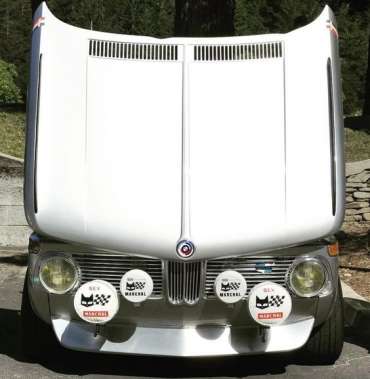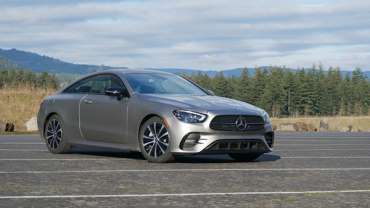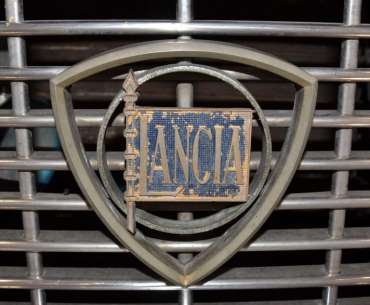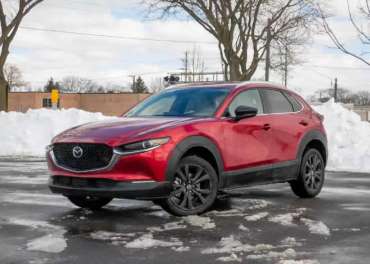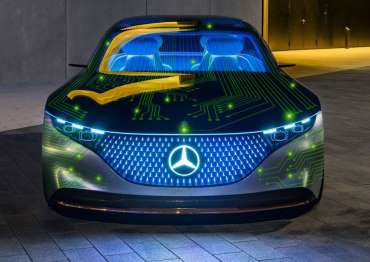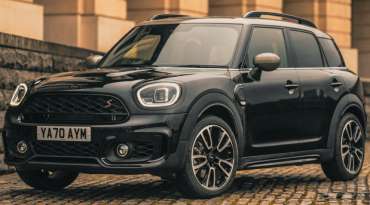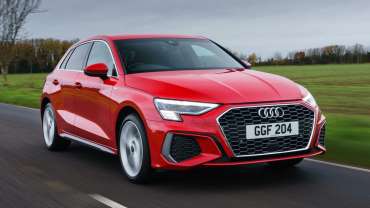
Worldcarblog.com
What connects Ferrari, Ford and Citroën?
In short, a cat. A solid, black cat, so dark that it is almost invisible when in the dark and closes its eyes. But when he opens his eyes, he gives a light and a reflection that he can rarely copy and project accurately.
Although we all take for granted the name "cat's eyes" for reflective plates located on the pedals of bicycles or among the spokes of the wheels, it is a newer and younger "invention" than the original black cat and has been used for only forty years.
At the very beginning of the 20th century, Pierre Marchal, then in his twenties in the army and with a newly issued car license, met Renault Louis. With it, he explores the mechanics and possibilities of introducing electronics in vehicles, and also somewhat into functional things for life.
Thus began his many years of learning, research, and progress that would completely reverse the view of racing from Le Mans to Monte Carlo in the 1950s and 1960s.
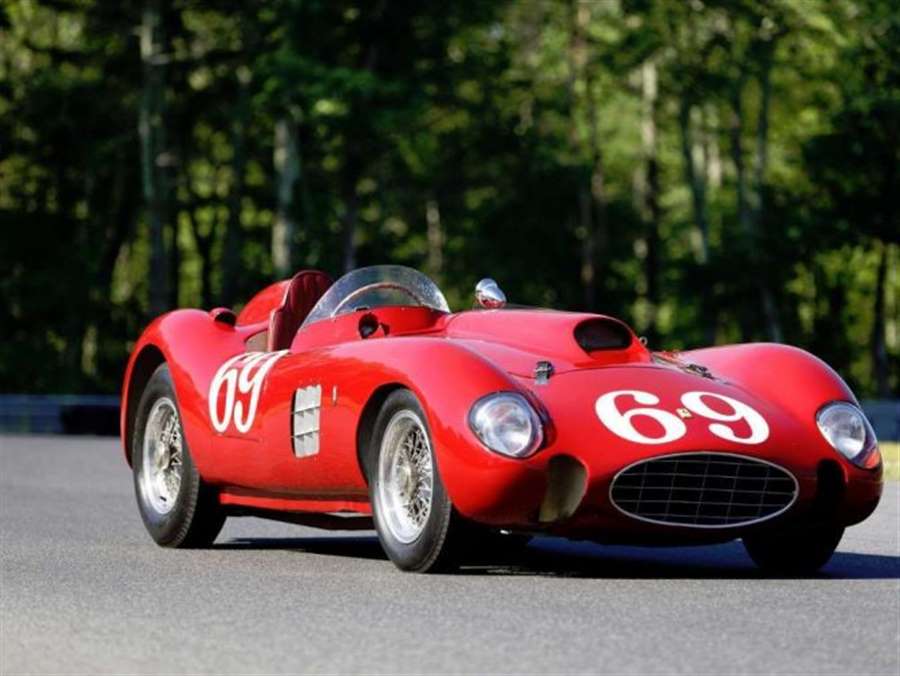
A few years after the First World War, Marchal, with a few friends and colleagues, opened a company in the suburbs of Paris. More precisely a garage.
In that garage, with joint efforts and intelligence, they created and produced things like projectors, dynamos, starters, headlights and some other things. The vast majority of French manufacturers relied on their products and increasingly used them in their factories.
According to the original story, Pierre Marchal was a big fan of his black cat who was a regular guest in the garage. Returning home late at night, he saw in the headlights the glare of the said cat and outlined an idea that would completely change the course of his business. It is written in history as a black cat - a lucky cat under the slogan "I lend my eyes only to Marchal" or in the original form "Je ne prête mes yeux qu'à Marchal". And this is not surprising because the French adore cats - as animals, in art form and in the world-famous illustration Le Chat Noir. This story is also connected with the belief in the matagot - a spirit in the shape of a black cat that is waiting for you at the crossroads between this and that world, and if you feed it well, it will provide you with almost infinite wealth.
Basically, a typical cat - give good food and everything will be as it should be.
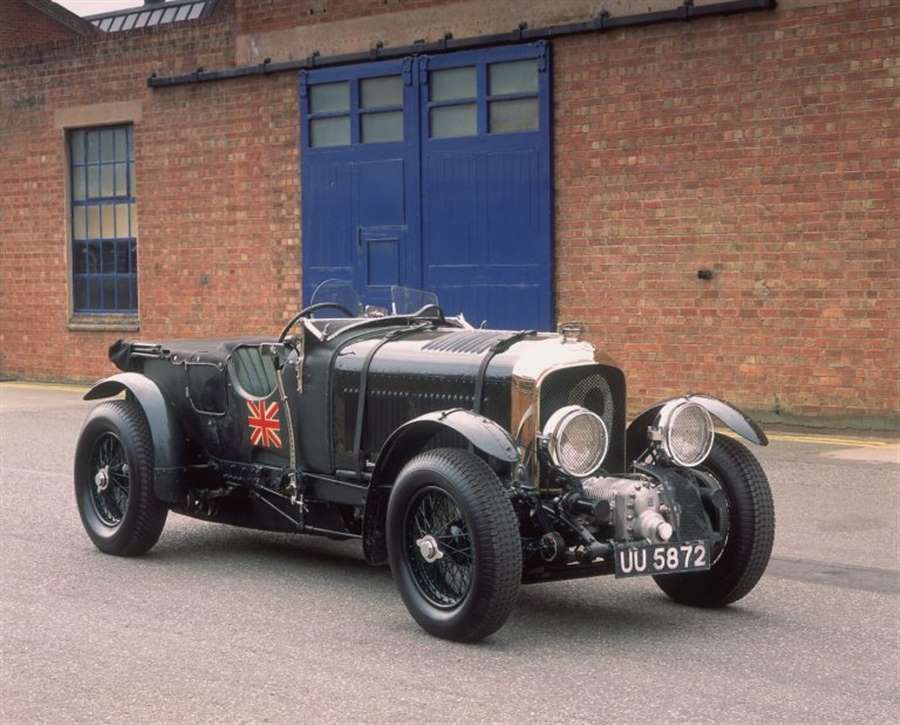
The first major successes were achieved three years later. Ie. when Marchal became a sponsor of the Monte-Carlo Rally and participated in the victory at Le Mans. Drivers Robert Bloch and Andre Rossignol as the first two-time winner of the Le Mans race, drove the likable Lorraine-Dietrich B3-6 with Marchal headlights. The fact that they were the first to make fog lights for race cars only contributed to the company’s business rise.
Until the early 1930s, Marchal used his headlights to adorn models from Hispano-Suiza, Delahaye, Talbot and others. And according to the James Bond novels, the first official car "007" was the so-called Blower Bentley from 1931, which is also illuminated by a "cat".
It is worth mentioning that this Bentley was produced in only 55 copies between 1929 and 1931, and that the current price of the surviving Blowers ranges from 400 thousand to almost 5 million dollars. It would be a small price packed with "cat's eyes".
The rise in production and popularity took a break during World War II, after which the branding of the “black cat” took off. In this new era for Marchal, the cat on the advertising poster begins to juggle car parts, wears lamps in his paws, drives a car with a helmet on his head and waves the target flag. And that attracted the Ferrari 375 Plus in 1954, which won the 24 Hours of Le Mans in the hands of drivers Gonzalez and Trintigant and also did fantastic marketing.

Immediately after that, Lancia took Marchal as the official supplier instead of the previous headlights and earned a victory at the Monte Carlo Rally. This makes the "black cat" even more popular.
In order to promote the diversity of the vehicles on which their headlights were worn, the company redesigned Citroën’s H-Van.
They mounted on it almost everything they produced at the time. That is, all types and sizes of lights, trumpets, car parts, and the roof was adorned with a huge S.E.V. Marchal inscription.
If you find yourself near the 24 Hours of Le Mans Museum, you can watch this decades-old installation live.
In the early 1960s, a logo made up of a cat and a black-and-white flag “cemented” Marchal as instantly recognizable and closely tied to motorsport. And the list of cars with which Marchal lends "eyes" also includes the retro racer Ferrari 330, which in 1962 was driven by driver Phil Hill to win the 24 Hours of Le Mans. It was a particularly notable victory, as it was the first to be achieved with so-called iodine projectors. That is, the headlights that are in it road use has just been tested in Marchal.
With a solid foundation and success to date, Marchal's "eyes" were also found on the Porsche racing derivatives of the 911 and the legendary 917. In addition to the famous racers from Zuffenhausen, Marchal has installed its headlights on another legend, the Ford GT40. On that Ford racer, Marchal contributed to winning several victories in the 24 Hours of Le Mans in the late 1960s. And then Renault Gordini and BMW Alpina also fell in love with the "black cat".
Since the founder and originator of the whole idea, Pierre Marchal, passed away at that time, there has been a slight slowdown in success and a change in business. As a result, the competition is a little free of the road to the title of winner. In the early 1970s, Ferodo took over Marchal's business and led it in a slightly different direction. This reduces the emphasis on headlight production, but improves the production of the remaining parts.
A few years later, Cibie, as the biggest competitor, joins forces with Marchal and becomes something that is known to this day as the Valeo Group.
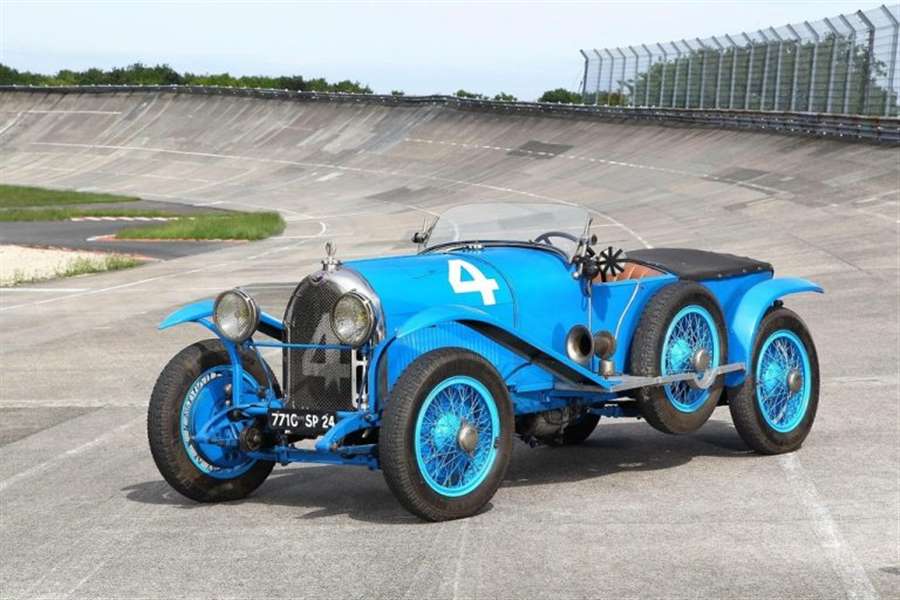
In addition to Cibie, PIAA was also the main competitor in rival circles. Although it was founded a decade before Marchal, it was still not as successful as the "black cat". But it is still active with a huge opus of headlights that could be needed in the market.
When it comes to competition, at the very mention of the name Bosch the first association will rarely be light. But even that company has found its sun in the domain of lighting parts on cars. One of the specifics of this company were asymmetrical lights, ie headlights with which the driver's side gave more illumination than the passenger's side. Due to this asymmetry of the headlights, the glare in traffic was reduced.
The Italian company Carello was also founded before the First World War. And it has earned its success in the domestic market by producing fog lights. After all, how can you even imagine an Alfa or a Lancia without an Italian fog light on it?
In the Balkans in the 1970s, there was also the company Saturnus. This company is still present and today it acts as the main sponsor of the Slovenian race called Saturnus.
In the early 1990s, this company replaced the metallized substrate with heat-resistant plastic in all its lights and thus made a huge step forward. It is still present on the market today and, in addition to continuous development, is also engaged in the production of fog lights, daytime running lights and multifunctional lamps.
As developments in production intertwined the ups and downs of all companies, Marchal continued to make its way through factories as a classic that simply had to be found on even more different car models. Thus, on the one hand we have the Citroën DS, or the legendary "Frog" with "cat's eyes" that the headlights of this company drive on European roads, and on the other hand we have almost every Mustang GT that was produced in the first half of the eighties.
Although Marchal has been going through various combinations and partnerships throughout its glorious history, in the 1980s this company became part of the Valeo Group, of which it is still a part together with Cibie. Looking through history, it is clear that in his time Pierre Marchal with his “black cat” provides very good visibility for some of the fantastic car models. Throughout its rich history, this company has been ubiquitous and esteemed during the so-called "vintage motorsport" and legendary races such as 24 Hours of Le Mans, which new generations could witness through the recent film adaptation of "Ford vs Ferrari".
The name of the company Marchal, according to some allegations, was bought in 2009 by a Japanese company that manufactures headlights for cars. But with all the modifications and differences, car enthusiasts have a hard time agreeing to call something like that a last name that meant the best of the best in the 1950s and 1960s.
Who would have thought that an ordinary, happy black cat helped in something like that.
automobili.hr
2021 Mercedes-Benz E 450 Coupe Review Test Drive
The schedule said a 2021 Mercedes-Benz E 450 was going to be showing up on Tuesday. The following week was therefore going to be a good one, at least automotively, with one of the finest sedans in creation gracing the driveway. Perhaps we’d take a nice family drive somewhere; take advantage of that big, comfy back seat.
Then the E arrived. It was missing doors. And B pillars. And that big, comfy back seat. This was in fact going to be a week spent with an E 450 Coupe. Admittedly, I had just assumed it would be a sedan and if I’m honest, I had pretty much forgotten the E-Class Coupe even existed. After all, two-door cars are increasingly an endangered species with scarce sales and a consequent meager selection of choices. To that point, the E 450 is the only car in its class. The coupes offered by BMW, Audi, Infiniti and Lexus are all smaller and cheaper, while there are a number of bigger and/or pricier choices.
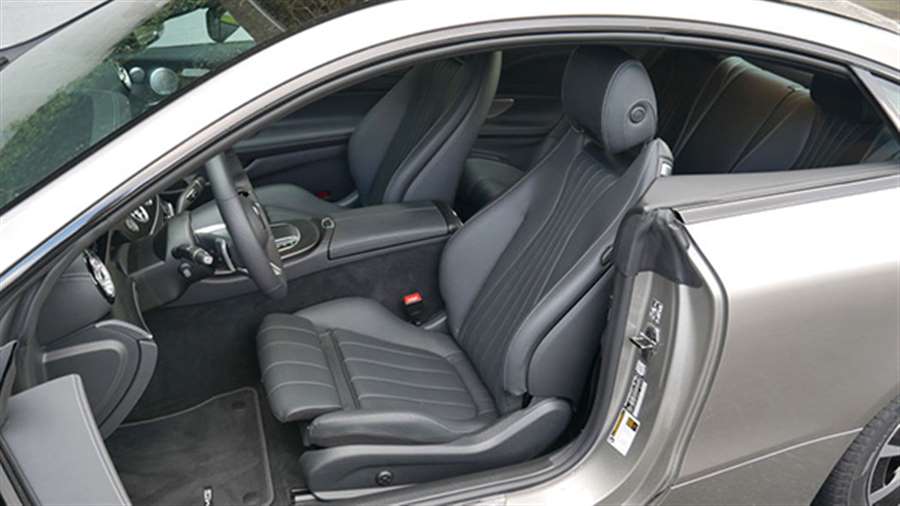
This scarcity is a tragedy. There’s an indelible romantic quality to coupes, especially ones as beautiful as this one, its curvaceous body slathered in silky Mojave Silver paint. They are indeed inherently less practical than a sedan or, ugh, a crossover coupe. They’re also inherently not a transportation appliance. By choosing a coupe, you’re far more likely to have drives that are more about the journey than the destination. Trips that are about the one or two people sitting up front, rather the kids or friends in back, and all the stuff you crammed into the trunk to enjoy away from the car at that destination. I can remember every coupe I took on a road trip: the Mercedes CL65 to the Grand Canyon, the Nissan GT-R to Vegas, the Challenger to Phoenix, the LC 500 to Bend, Oregon. All the sedans and SUVs everywhere else? They’re just a blur.
In a way, though, choosing a coupe is also the practical acknowledgment that back seats are often rarely used and trunks rarely filled. You can file a crossover coupe’s all-wheel drive and extra ground clearance into that folder as well. If you already have a practical car at home, why not indulge in a little automotive romanticism? When did we all get so sensible and boring?
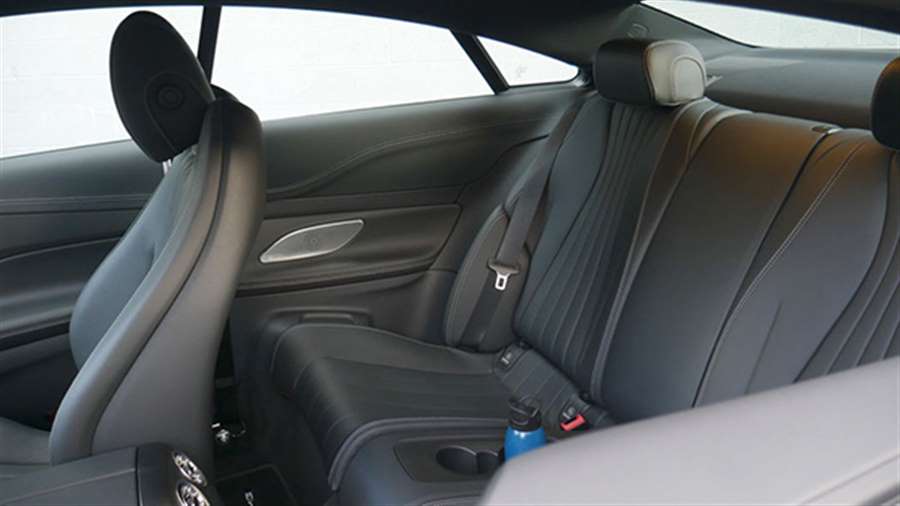
Probably around the time that traffic became unbearable everywhere and the vast majority of driving a chore. Why have a romantic car when so many people see nothing romantic in driving? We are not those people, though; certainly not if you find yourself routinely reading Autoblog. While much digital ink has been spilt in the crusade to #SaveTheManuals, some should be held in reserve to protect coupes from going extinct. Just as much would be lost.
Although the E 450 Coupe shares its interior design with its sedan and wagon siblings, the grand, opulent nature of it seems far more fitting in this most romantic of variations. The broad swath of open-pore wood seems to lap across the dash likes waves and cascades down the center console. The four rotary air vents stare out like the engines of a 747, their inner workings aglow in multi-color ambient lighting that complements the color glowing from behind the trim below. There are the grand, futuristic MBUX displays, the intricate Burmester speaker grilles and the novel, twin-spoke AMG steering wheel. This E-Class Coupe may not have been graced with one of the striking two-tone color combinations, but even in all-black, this cabin stands to make every drive that much more of an event, which, to belabor the point, is a coupe’s raison d’etre.
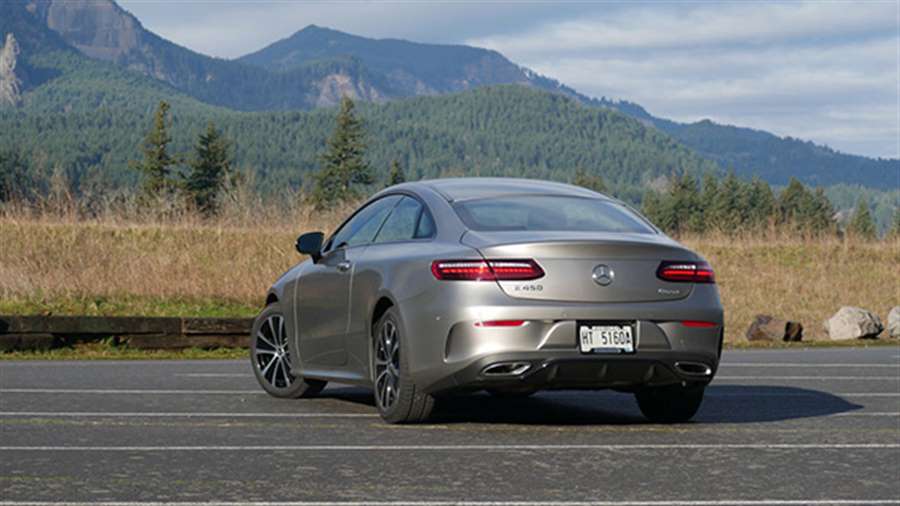
To that end, actually driving the E 450 is as special as one would hope. In true grand touring tradition, it can cosset you comfortably for countless miles with a ride that’s far cushier than anything you’ll find in a sports coupe (a BMW M4, for example). True, our test car benefited from ample sidewall courtesy of 18-inch wheels, significantly reducing the chances of harsh reactions to gnarled pavement. Yet in its pocket was also the optional Air Body Control air suspension, a cool $1,900 that’s very well spent. In addition to providing the aforementioned plush ride one might expect from something dubbed an “air suspension,” its ability to firm up the damping and lower the ride height also improves handling. While most cars today have some sort of drive modes that alter various components and controls to create a more relaxed, comfortable or engaging driving experience, the E 450’s goes a bit further by actually transforming the car’s character.
With the suspension considerably firmer, the steering tauter, the transmission staying in lower gears and the throttle more responsive to delicate inputs, you might as well be in a different car. That’s neat, because the car you were previously in was pretty great. So is this one, but in a different way. In Sport+, or to a lesser extent Sport, it suddenly feels smaller and more agile, as if shrink-wrapped around you. At the same time, the suspension never becomes intolerably firm, nor the powertrain overcaffeinated. It doesn’t try to be a sports coupe and is better for it.
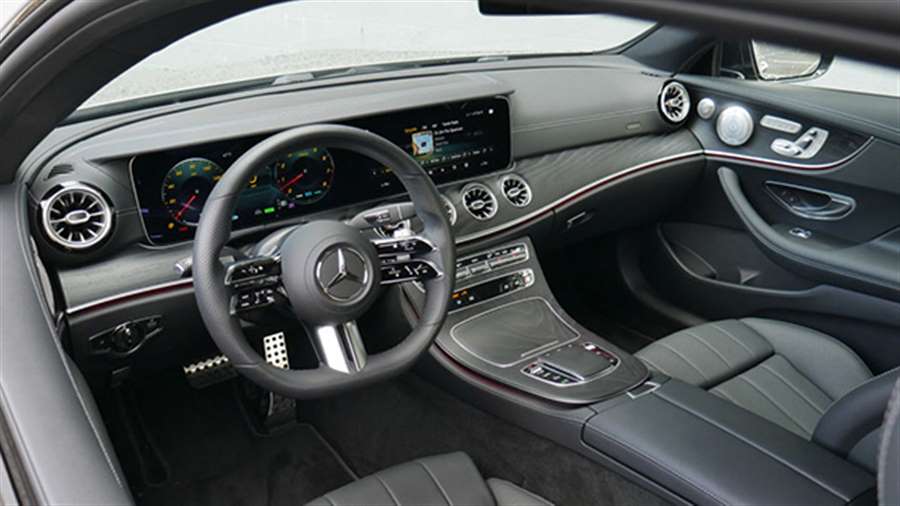
Under hood, the E 450 has Mercedes’ innovative new turbocharged 3.0-liter inline-six with EQ Boost mild-hybrid system. It’s good for 362 horsepower and 369 pound-feet of torque, and when paired with 4Matic all-wheel drive as this was, dispatches 0-60 mph in 4.9 seconds. True to the car’s character, this is a rather undramatic powertrain. There are no histrionic AMG exhaust noises, and if Mercedes pipes in anything fake through the sound system, it’s certainly not noticeable. It’s incredibly smooth and effortless in its power delivery, which probably shouldn’t be surprising for an inline-six amplified by a turbocharger and an electric motor. If there is a dynamic complaint, it’s that the nine-speed transmission’s Sport+ mode isn’t quite as eager to downshift when braking as in AMG applications.
One also has to acknowledge that by going with a traditional hardtop coupe design and dispensing with the B pillar, you can detect a slight loss in structural rigidity, especially over bumps. There’s no flex or creaking or anything overt, but there are also no free lunches. At least the resulting meal of freer-flowing air and the classic coolness of a hardtop is forever tasty. Pity about that little vestigial window bit at the rear.
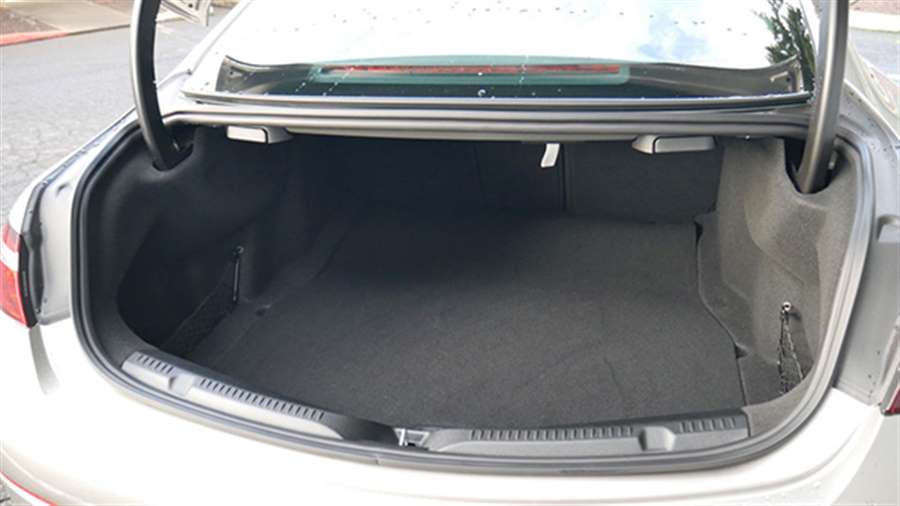
Losing the B pillar also makes it far easier to climb into the back seat, but this is still a coupe. It’s obviously a lot less practical than a four-door car. At least it’s a big coupe. The trunk measures a perfectly usable 10 cubic feet, and the back seat offers sufficient legroom for average-sized adults. Headroom is surprisingly good too, although taller folks may find the car’s rather aggressive tumblehome making contact with the side of their head. Weird.
Really, the E 450’s biggest drawback is one common with every newer Mercedes: the MBUX interface is convoluted and frustrating. Sure, it looks pretty, but it’s laborious to switch between menus; too many icons are small and the same color as the background; and although it utilizes a touchscreen, the unit is so far away, I end up wanting to use the touchpad that falls readily at hand. Except touchpads are a terrible way to control things in a car. See Lexus, Remote Touch.
Yet much like that infernal bit of tech in the otherwise exquisite Lexus LC 500, my dislike of MBUX doesn’t come close to ruining the Mercedes-Benz E 450 Coupe. It may represent a segment of one, but it’s hard to imagine any brand possibly topping this masterful and appropriately romantic effort. It’s a special car and it made for memorable drives, even if here in early 2021, there was nowhere to really go. I suppose that makes a car like this even more important – your drives have to be about the journey since the destination is inevitably bound to be something no more exotic than Target or the drive-thru.
Lancia and one good news
Given that Lancia as a car manufacturer has not existed in the right form for a long time, what follows can definitely be characterized as good news.
Aurelia, Stratos, Fulvia, Beta, Flavia, Delta… even Thema. These are all models that adorned the offer of the company that Mr. Vincenzo Lancia set up 114 years ago as part of this or that period.
And not only that, but it is precisely this company that is responsible for the million and one patents that make today’s auto industry what it is. To begin with, it is worth mentioning that it was Lancia that signed the first independent suspension mounted on a single production car. Then there is the first V6 engine with which the Aurelia model premiered on the market in 1950. And then there are some other inventions, such as the 5-speed gearbox, the V4 configuration engine and the first organized and properly installed electrical system with which the Lancia Theta was born back in 1913.
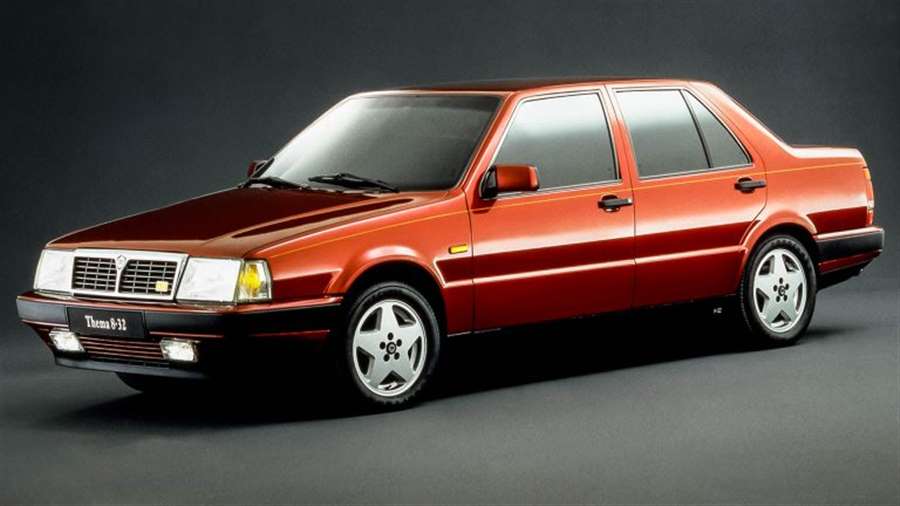
Basically, over the years and years of existence of this brand, the team of mechanics and technologists there is responsible for the huge number of systems and solutions that the automotive industry still uses today.
And if for no other reason, then it's a real shame that Lancia, in its true form, actually shut down a few years ago.
In the world of racing, Lancia as a manufacturer has also in some ways redefined the notion of speed. Because apart from notable performances at the legendary Mille Miglia pop races, and participation in the largest octane circus in the world, ie the one called Formula 1, Lancia has written pages of its history in the dirty and dusty world of Rally. The Fulvia HF was untouchable during the 1960s. Then the seventies were marked by the Stratos HF, and then the first chapter of the eighties brought the Rally 037 and Delta S4, thus changing the history of racing forever.
But from 1987 to 1992, with his 6 consecutive world titles, the Lancia Delta HF Integrale built his story little by little, which eventually resulted in the nickname "Queen of the Rally". Because this model has won the title of the best Rally-car for 6 years in a row.
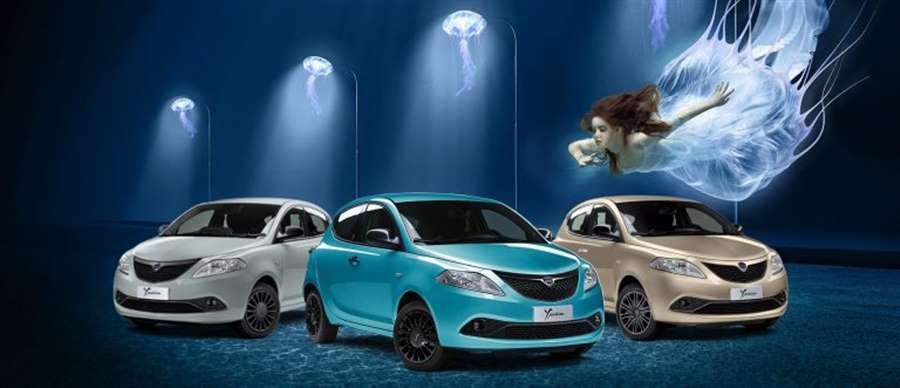
Today, Lancia produces a single model: the Ypsilon, or Fiat Punto with Notre Dame Humpback Syndrome. And believe it or not, this ridiculous and seemingly unnecessary car has been one of the best-selling cars in Italy for years. Because with its 43,109 units sold in Italy only last year, the Ypsilon ranks second in terms of sales results behind Fiat's Panda model.
You certainly didn't know that, did you ?!
As a car manufacturer, Lancia is generally shut down. But the name lives on. Because when the FCA group simply failed as an idea, the whole story of existence for Citroën, DS, Alfa Romeo, Fiat, Chrysler, Dodge, Jeep and some others was taken over by a newly formed corporation called Stellantis. And among all these car manufacturers is Lancia.
Basically, that company, owned by Peugeot (or Exor), Chinese Dongfeng, BlackRock and the Vanguard Group, has redeployed staff these days, and a story has been started about the revitalization of certain brands. Ie. returning the concerned to their (deserved) place under the sun.
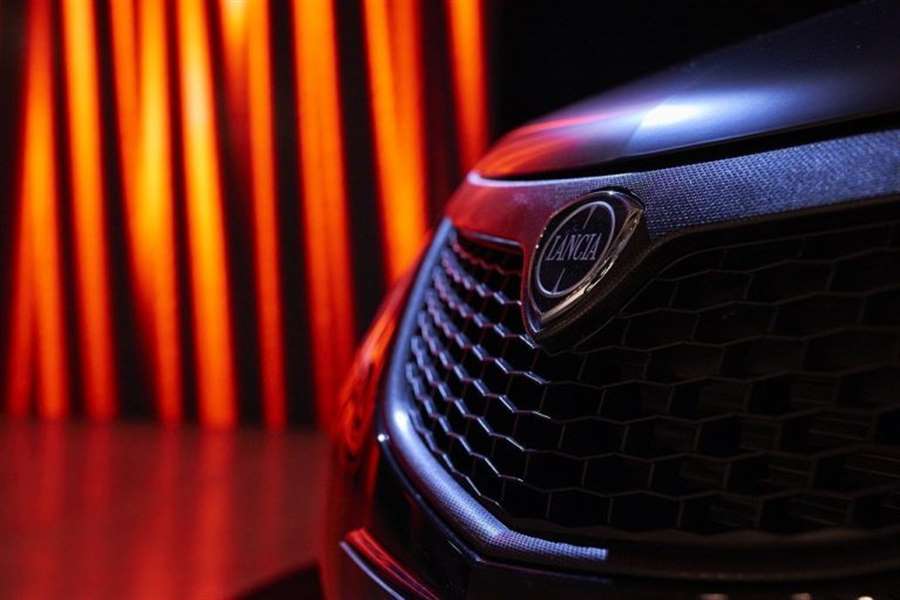
A few days ago, a short interview with a young lady named Marion David appeared in public. The lady in question is employed within Stellantis as the main and responsible person in front of Citroën's DS brand, so it is to be believed that her aunt knows what she is talking about.
Basically, at the recent presentation of the new DS4 compact it was said this:
"We are currently working with our Italian counterparts to create special modules, powertrains and new technologies to create a range of special models and thus separate the 'premium' and 'mainstream' segments.
Given that Lancia, despite its pale existence, still stands as a manufacturer in the domain of the "premium" category, this sentence certainly serves as good news for Lancia. Because it means, among other things, that Lancia, as part of the whole story, will no longer stand like a fifth wheel and ruin the plans of the rest of the group, but that soon this company could bring a new and interesting model to the market. And that in the near future, that is, according to some announcements, already in 2024.
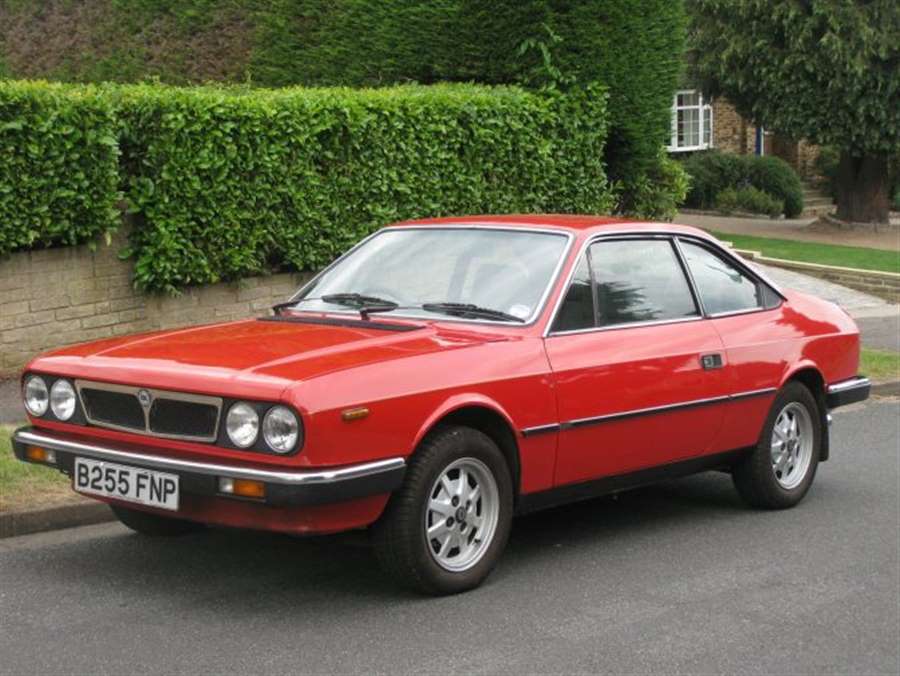
The current reality for Lancia is actually sad. Because laziness combined with impersonal models and a pile of breakdowns couldn’t even bring a different result. And it is actually a kind of public secret from which this newly formed group, who knows how many times, is trying to move away as far as possible.
The FCA group did not succeed in that, although the man in the brown sweater, ie Mr. Sergio Marchionne, did his best around the whole story.
But the result is only a few Lancia models that are sold on the European market instead of the Chrysler logo, while the Ypsilon is just a slightly retarded Punto that is sold only on the Italian market. And that is why there is no profit in the form in which it would be desirable, so it is necessary to rearrange the wheels and turn the whole story upside down.
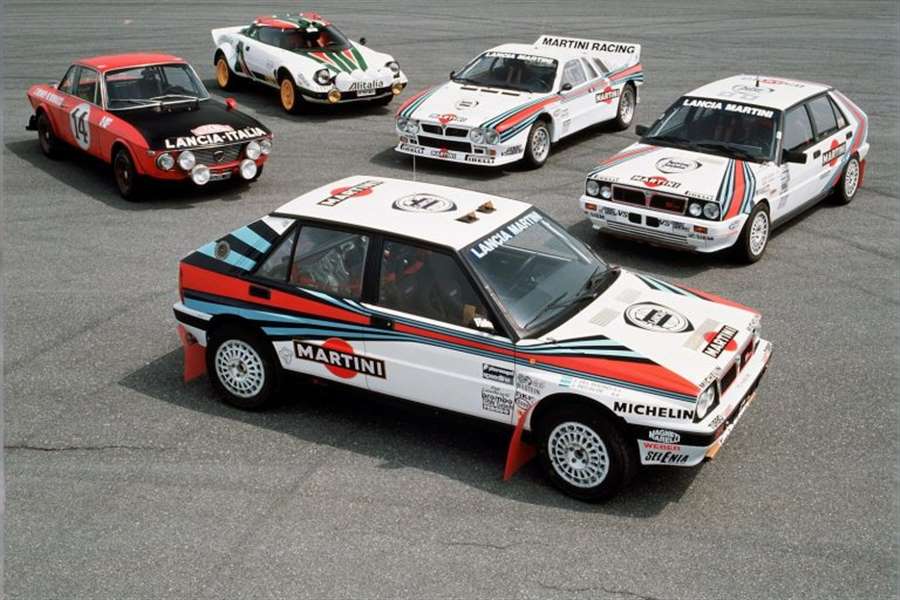
Basically, as things stand now, it might be illusory to expect a new Delta Integrale or a performance by Lancia in a new variation on the Group 5 theme. But at the moment, any shift is better than the stagnation, that is, the capitulation of a famous brand in the market that history draws from mothballs only when it is necessary to create a marketing campaign.
But the very mention of reviving this famous brand in its true form somehow brings a smile to your face.
Is that the case with you, dear readers?
automoili.hr
2021 Mazda CX-30 Review: More Fun, Still Flawed
The verdict: The 2021 Mazda CX-30 is refined in many ways, and a new turbocharged engine option elevates it as a value alternative to many entry-level luxury SUVs. Beyond that, it lacks too many commonsense attributes for mass-market appeal.
Versus the competition: Upscale and fun to drive even if you don’t get the new turbo engine — and legitimately quick if you do — the CX-30 will deservedly find its loyalists. But many mass-market competitors have simpler controls, softer rides and roomier cabins.
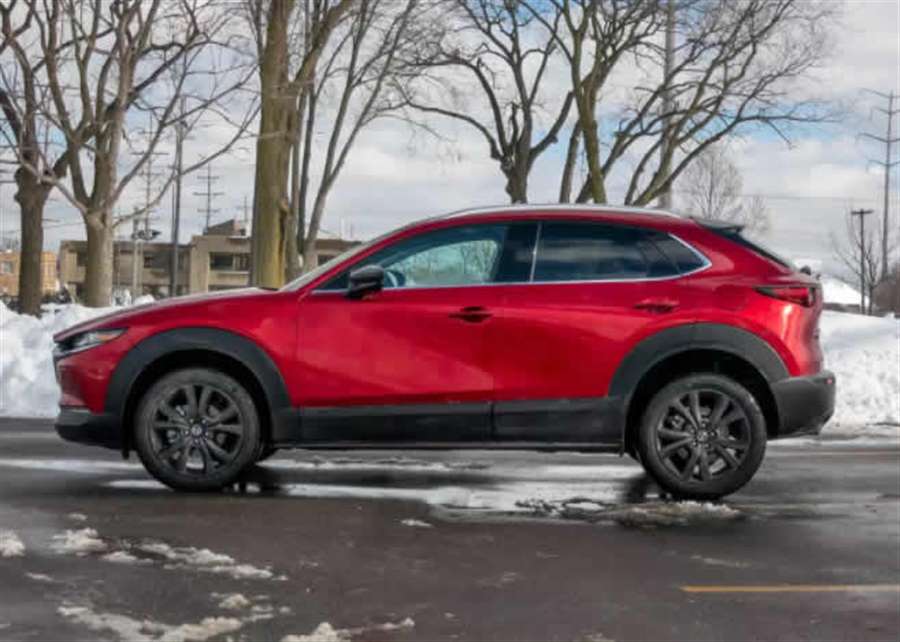
Based on the current-generation Mazda3 sedan and hatchback, the CX-30 enters its second model year for 2021 as a more viable alternative to the too-small Mazda CX-3 SUV. It comes in seven trim levels with front- or all-wheel drive and two available engines; stack them up or compare the 2020 and 2021 models. We evaluated a well-optioned turbo model for 2021, but I’ll mix in some impressions from the base-engine 2020 CX-30 that we tested in Cars.com’s recent Affordable Small SUV Challenge, where I served as a judge.
The CX-30’s third-place finish out of four SUVs in the comparison test tells much of the tale: Mazda’s small SUV drew top scores in some areas but bottom marks in others, with very little about it evoking neutral reactions. One model year later, Mazda plopped in a newly optional turbocharged four-cylinder, which matches the character of its carryover base engine: refined, steady power — just more of it. The fun’s been turned up, but the flaws live on.
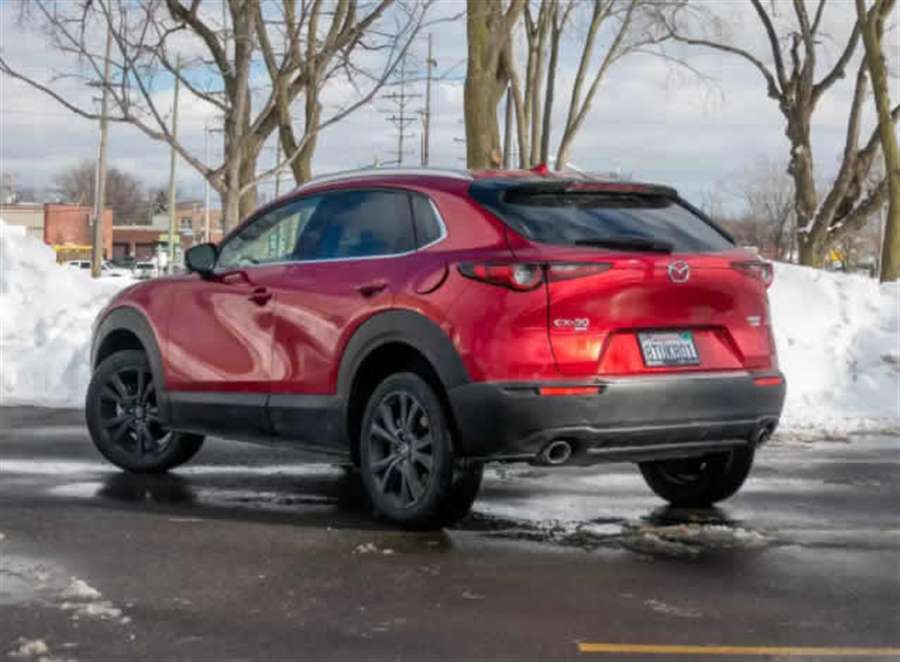
Refined Engines
In a field where pint-sized engines, many of them turbocharged, can lend tentative acceleration, the CX-30 is an old-school breath of fresh air. Its base engine, Mazda’s refined 2.5-liter four-cylinder (186 horsepower, 186 pounds-feet of torque) provides smooth if unspectacular power: sufficient from a start, with linear revving through any sustained on-ramp charge. It pairs with a six-speed automatic transmission whose tall gearing works against such drawn-out spurts — a disadvantage on paper, where rivals’ eight- or nine-speed units can make for shorter passing gears without diminishing fuel economy. But the six-speed earns its keep if you need more power while already in motion because downshifts are both decisive and immediate when you press the gas, an exercise many eight- and nine-speed automatics butcher.
Our comparison test exemplified how this plays out. We clocked a 2020 CX-30 with the 2.5-liter engine and AWD at a pedestrian 8.92 seconds to 60 mph, third slowest among four models (the others being a Chevrolet Trailblazer, Kia Seltos and Subaru Crosstrek, all with top available engines). Despite that, the CX-30 earned the group’s highest scores from our judges for overall powertrain impressions. Credit its consistent power delivery, which belies any absolute performance metric.

New for 2021 is Mazda’s turbocharged 2.5-liter engine, available only with AWD. It can run on regular gas but makes 250 hp and 320 pounds-feet of torque on 93-octane premium fuel, which our test car employed. (On 87-octane regular fuel, ratings for the turbo 2.5-liter drop to 227 hp and 310 pounds-feet of torque; the non-turbo 2.5-liter makes its output with either fuel.) Though significantly quicker past 2,500 rpm or so, the turbocharged four-cylinder’s power profile is similar to its non-turbo sibling — which is to say linear, building power over the full breadth of available engine rpm. Gearing remains tall, but the extra power makes the late upshifts less noticeable. And all the while, it’s gratifyingly quick.
The CX-30’s EPA-estimated fuel economy ranges from 25 to 28 mpg combined, depending on drivetrain. Versus a selection of mass-market rivals, the 2.5-liter falls a little short. Versus some entry-luxury models, whose interiors the CX-30’s top trims rival, the turbocharged CX-30 compares better.
Handling and Ride Comfort
Turbocharged or not, the CX-30’s reflexes are similar to the Mazda3 on which it’s based. Limited body roll, excellent steering feedback and surefooted brakes make the CX-30 a deft ally on winding roads. Wet conditions and temperatures in the 30s stymied our test car’s Bridgestone Turanza P215/55R18 all-season tires, which struggled on cloverleaf interchanges to hold course. Our CX-30 in the 2020 comparison had the same tires in better testing conditions, and we observed notable slippage there, as well. Wider or stickier tires might help — but if the CX-30’s rubber is the weak link on handling, it’s a mild one.
All that fun sacrifices ride comfort. Like the Mazda3, the CX-30 exhibits good overall straight-line composure, free of excess body movement on uneven surfaces; in this regard, it emulates a few entry-level luxury SUVs. But suspension tuning is unabashedly firm. The CX-30 exhibits a degree of impact harshness absent in many competitors, especially mass-market rivals like the Crosstrek and Nissan Rogue Sport — enough to turn off many shoppers who just want a smoother rider.
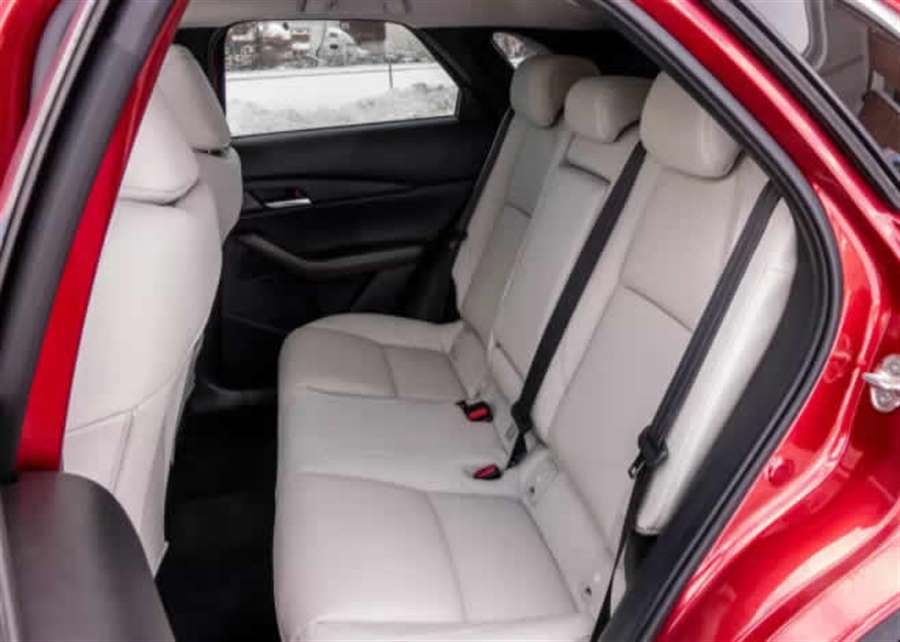
The Interior: Quality Over Quantity
For the most part, interior quality is strong. Controls boast meticulous detailing and operation, and most surfaces above knee level have consistent, low-gloss finishes. The CX-30’s optional leather seating surfaces are free of any obvious stretches of vinyl, and premium touches like universal one-touch windows hint at luxury territory. It’s not all excellent: A cheap headliner and some obvious cost-cutting in the backseat bring the CX-30 back to earth. By and large, though, this is a clear step above the SUV’s mass-market rivals. In our 2020 comparison, Mazda earned the highest interior quality scores by a clear margin, and in that regard may have fared well against SUVs priced far higher.
Despite that, interior quantity is marginal even if this is a larger alternative to the CX-3. The smallish backseat is ill-equipped to handle taller adults or even children in rear-facing car seats. Not only did it rank last in our comparison’s rear seats category, but it couldn’t fit Cars.com’s rear-facing child-safety seats without needing to move the front passenger seat so far forward that it may pose a safety risk for some adults seated there.
Even those who don’t plan to carry anyone in back often — children or otherwise — might find the CX-30’s confines, well, confining. The front seats have good sliding range but a narrow berth that could leave long-legged drivers feeling pinched. And as the CX-30’s relatively low-slung profile suggests, the driving position isn’t as high as you might expect of a conventional SUV. By our measuring tape, the CX-30’s driving position towers nearly half a foot above that of the low-riding Mazda3, but it trails the Seltos by roughly as much.
What’s more, the CX-30’s limited in-cabin storage and poor sight lines — especially out the rear window — are liabilities versus more utilitarian rivals; Mazda placed last in both categories (tied with the Crosstrek for storage) in our comparison. Cargo space, at 13.7 cubic feet by Cars.com’s independent testing, is a smidge above the Mazda3 hatchback (13.1 cubic feet, also by our accounting) and in the same neighborhood as the Trailblazer and Crosstrek, though the whole group falls well short of the Seltos’ as-tested 16.2 cubic feet.
Multimedia and Safety Technology
With the current-generation Mazda3 and now the CX-30, Mazda took a wayward turn on multimedia. No longer does the dashboard screen function as a touchscreen — even when the vehicle is stopped, as earlier iterations once did. It’s now a touch-free 8.8-inch display perched high atop the dashboard, controlled exclusively by a control knob and a few shortcut buttons on the center console. The setup especially stumps the CX-30’s standard Apple CarPlay and Android Auto integration, as both work best through a straightforward touchscreen.
Standard safety features include automatic emergency braking with pedestrian detection, lane departure warning with steering intervention and (impressively) adaptive cruise control down to a stop. The automatic braking passed third-party testing by the Insurance Information for Highway Safety, cementing the CX-30’s top scores across a battery of IIHS tests to earn the SUV a 2020 Top Safety Pick Plus award. (The award is likely to carry over for 2021, as the agency told us it has no plans to change criteria for the new calendar year.)
New for 2021, the CX-30 offers rear automatic braking, and top trim levels have new hands-on lane-centering steering by way of a feature called Traffic Jam Assist. Alas, TJA works only at speeds of 0-40 mph — a ceiling no longer imposed by most lane-centering systems available these days, regardless of price.
Should You Buy a CX-30?
Including destination, the CX-30 runs from just over $23,000 to about $36,000, a spread that overlaps a host of subcompact and compact SUVs to top out at the shores of the entry-luxury crowd. As a value alternative to the latter group, a CX-30 Turbo might justify itself; as a choice for driving fun among the mass-market models, a 2.5-liter example could also make sense. Given that the SUV ranks as Mazda’s second-best-selling model overall, it’s made the case to enough shoppers so far.
But larger market acceptance (the Crosstrek, for example, is three times more popular) will require a mainstream overhaul — a softer ride, bigger backseat, better visibility, simpler multimedia controls. As it stands, the normally aspirated CX-30 ranked in the bottom half of our 2020 comparison, and not for lack of quality or driving fun. With an infusion of high-end turbocharged trim levels, Mazda doubled down on everything we like, and it’s sure to get the CX-30 a cult following. But for all its remaining thorns, many mainstream shoppers may yet tune this Mazda out.
Source: cars.com
Starting in 2024, Full Mercedes-Benz Lineup Will Have Autonomous Capabili
Newly announced partnership with Nvidia will include over-the-air upgrades and could even yield a Mercedes App Store.
- Mercedes-Benz and Nvidia have announced a new partnership that will bring upgradable AVs and, maybe, a Mercedes App Store.
- This new deal doesn't exactly replace Benz's previous deal with BMW, which was put on hold last week due to future model timing.
- Based on the Nvidia DRIVE platform, the new partnership will be used in every next-generation Mercedes-Benz vehicle starting in 2024.
When planning for the future, it doesn't hurt to give yourself some options. Last year, for example, Mercedes-Benz and BMW announced that they would work together on autonomous passenger cars that would be available to private customers starting in 2024. Last week, that cooperation effort was put on hold and then this week, Mercedes announced a new partnership with Nvidia on automated-driving technology to be trolled out in new Benzes starting in 2024.
Even though that could be read as Daimler swapping out BMW for Nvidia for its upcoming AV tech, the reality is a bit more complicated. A Mercedes-Benz spokesperson told Car and Driver that the cooperation with Nvidia is independent from the one that was planned with BMW. "The timing with planned models from BMW did not fit, that is why we put the cooperation on hold and may resume later," she said. "With Nvidia we are looking at a software-defined architecture for automated driving features. This is different to what was planned with BMW."
Different and bigger. Danny Shapiro, Nvidia's senior director of automotive, told C/D that the future that his company's new deal with Mercedes-Benz offers comes with support from the top, which means Nvidia CEO Jensen Huang and Mercedes-Benz AG CEO Ola Källenius.
"Don't think of [the announcement] as a product but a change in strategy and architecture that [Mercedes'] entire future lineup is based on," he said. "It's very significant on both sides. It's rare for an automaker to put so much trust in another company. Ola and Jensen have been working very, very closely on this. It's top down in both companies."
Every Mercedes Will Get Nvidia's AI Supercomputer
So, what's in the deal? As Shapiro said, a lot. Mercedes-Benz and Nvidia are going to build a new software-defined computing architecture for automated vehicles based on the Nvidia DRIVE platform that will be installed across the fleet of next-generation Mercedes-Benz vehicles, starting in 2024.
"It's really a transformative business model for Nvidia and Mercedes-Benz," Shapiro said. "The entire fleet, every car from the entry A-classes to the S-classes, will have the highest-performance Nvidia AI supercomputer on board."
Shapiro said that each of these new Mercedes vehicles will come with the full surround sensor suite installed and then, similar to how Tesla does things today, it will be up to owners to decide if they want to activate features, either when they purchase the car or after the fact with an over-the-air update. "There will be different business models, subscription service possibilities or one-time fees or things like that, depending on the region, that potentially turns the car into a fully upgradable, perpetually upgradable device, and there potentially could be be a Mercedes App Store," he said.
The features include what Mercedes calls "state-of-the-art automated driving functionalities" that will be able to "automate driving of regular routes from address to address," but since Mercedes is only promising Level 2 and 3 autonomous driving, the driver may need to take over in some situations during the drive. Mercedes says future automated parking functions that use this system could offer up to Level 4 capabilities, which means the car could go park on its own.
Source: caranddriver.com
Mini Countryman and Mini Clubman Shadow Edition
The Mini has only offered the Countryman and Clubman models in the new Shadow Edition in the UK market, with a refined look and richer equipment.
These models are available in the UK in the Cooper and Cooper S editions, with manual and automatic transmissions, and even as an All4 PHEV in the case of the Countryman model.
Both models are available in Midnight Black metallic color, with contrasting Silver roof and mirrors, Piano Black details, LED lights, roof racks (optional on Clubman), 19-inch JCW Circuit Spoke alloy wheels, JCW aero body package, "Shadow" logo , JCW sports seats, Piano Black accents in the interior, sills with special graphics, sports leather steering wheel with red Chili Red stitching, new 5.5-inch digital instruments, USB port, Drive mode selector ...
The standard equipment also includes the Excitement Pack (LED ambient lighting and Mini logo projection), then the Navigation Pack (8.8-inch screen, navigation, Apple CarPlay ...), while the Comfort Pack, Comfort Plus Pack and Navigation Plus Pack are available as options .
The Clubman Shadow Edition in the UK starts at £ 26,805 and the Countryman Shadow Edition at £ 28,755.
Deliveries to the first customers have been announced for April.
autoblog.rs
New Audi A3 40 TFSI e 2021 review
Is the Audi A3 40 TFSI e plug-in hybrid the best variant of the premium hatch?
This Audi A3 PHEV should appeal to company-car choosers, but everyone else may be put off by the higher list price and still-modest electric-only range. It’s beautifully finished inside and has lots of appealing tech, but its performance is compromised – in S line trim at least – by a stiff ride that means that cars with the same powertrain from sister brands are not only cheaper and more spacious, but also more comfortable.
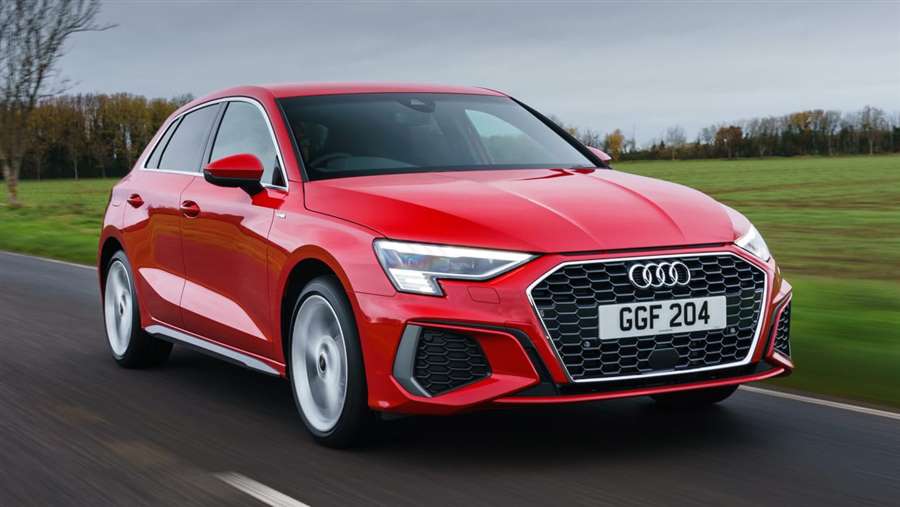
There was a time, not too long ago, when the key model in any Audi line-up was the leanest diesel – the variant that could help user-choosers save the most on their company car tax bill while still allowing them to sit behind the wheel of a premium product on a daily basis.
Now, though, the plug-in hybrid grabs the benefit-in-kind tax headlines, so this car, the A3 40 TFSI e, is a crucial weapon in Audi’s arsenal as it tries to poach sales from the Mercedes A-Class and BMW 1 Series.
The A3 PHEV uses well known VW Group technology – which is to say that, on paper at least, there’s not an awful lot to separate the 40 TFSI e from the SEAT Leon E-Hybrid and the Skoda Octavia iV.
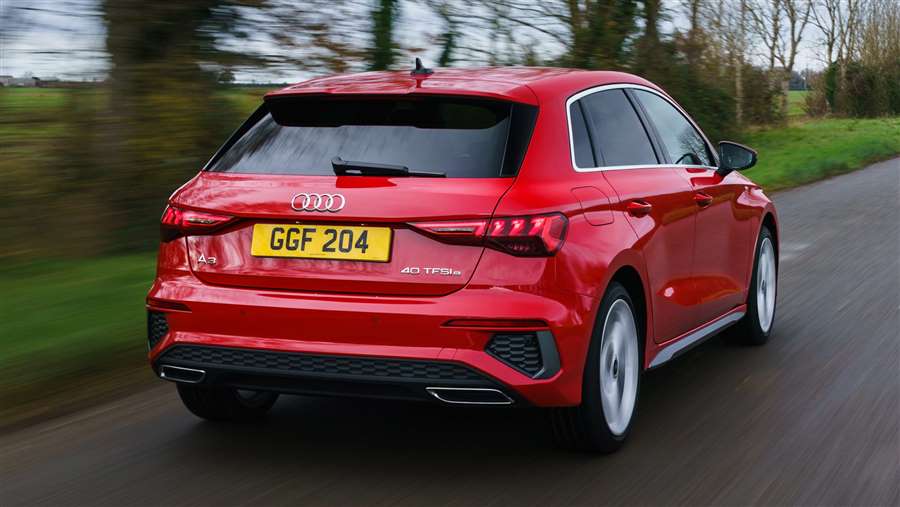
At its heart is a 1.4-litre turbocharged four-cylinder petrol engine producing 148bhp, and an electric motor contributes a further 107bhp. There’s no quattro four-wheel drive here, just a regular front-drive layout, and the transmission is not VW’s latest seven-speed dual-clutch automatic, but rather a six-speed DSG. A manual ’box isn’t offered.
Audi says you should be able to replenish the car’s 13kWh battery completely with a wallbox in around four hours. Overnight fill-ups shouldn’t be an issue.
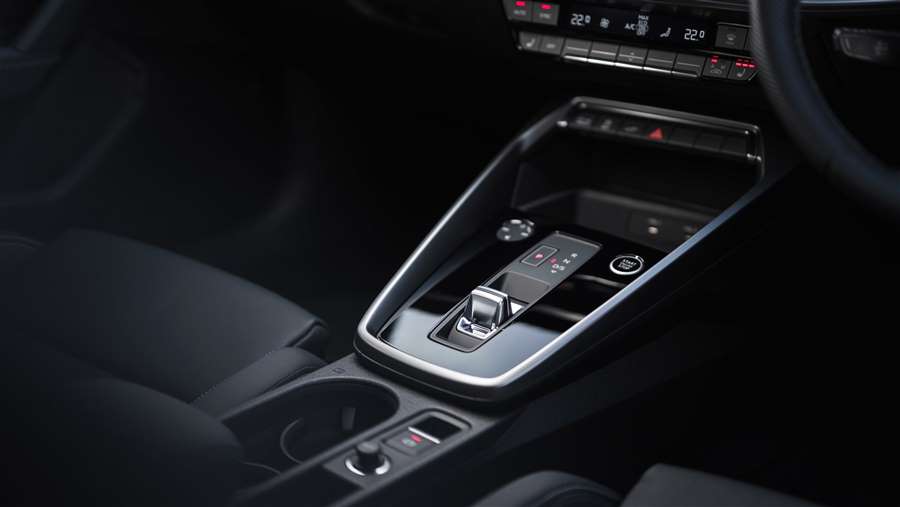
The total system power is rated at 201bhp and 350Nm of torque – enough for 0-62mph in 7.6 seconds. Perhaps just as important is the electric-only range – 40 miles, or 37 if you spec S line trim and 18-inch wheels, as on our test car here – and the fact that the plug-in A3 can reach 37mph in 5.2 seconds on electricity alone.
In S line trim, the plug-in A3 sits in the 11 per cent tax band, although that will rise to 12 per cent for the next tax year. However, if you settle for a 40 TFSI e in Sport trim, then the electric-only mileage will rise to the point where the bands will be seven and eight per cent respectively.
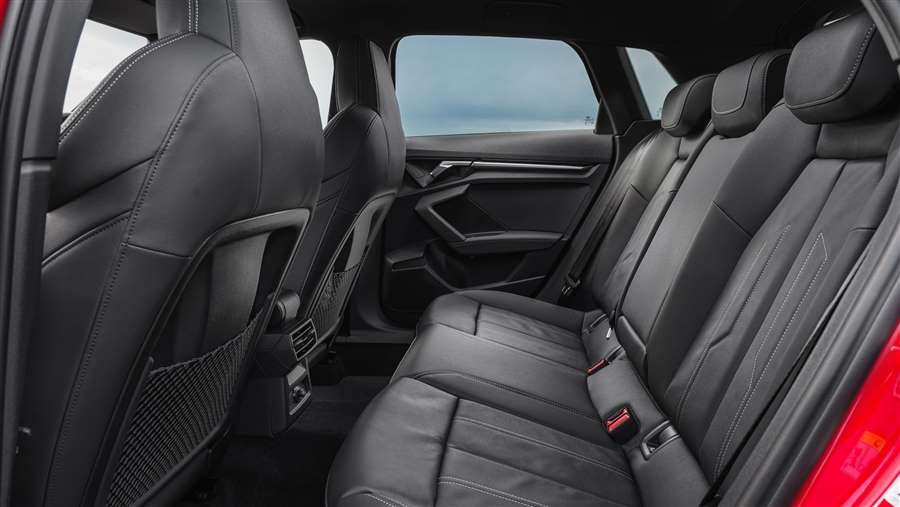
Although it was freezing cold and wet for our drive – conditions that usually restrict a plug-in’s range – our experience indicates the car should be able to get within 20 per cent of that predicted electric-only range. It pulls away in EV mode by default, in fact, and you’ll soon find yourself trickling it along 30mph routes, enjoying the relative silence.
We say ‘relative’ because the chunky alloys and sports suspension mean there’s a fair bit of noise from the road surface, and they relay a bit too much of what’s going on down there. Audi has made great strides in giving its S line editions a more tolerant ride, but while the A3 isn’t unbearable, it’s too easily unsettled by what’s beneath it. This, in turn, undoes what would be decent body control in corners, because you’ll find yourself skipping laterally across any imperfections. It just doesn’t feel like the best take on the VW Group’s ubiquitous MQB platform for the UK’s awful roads.
It’s a pity, really, because once you’ve gone beyond pootling around town, the hybrid powertrain is both surprisingly potent and extremely smooth.
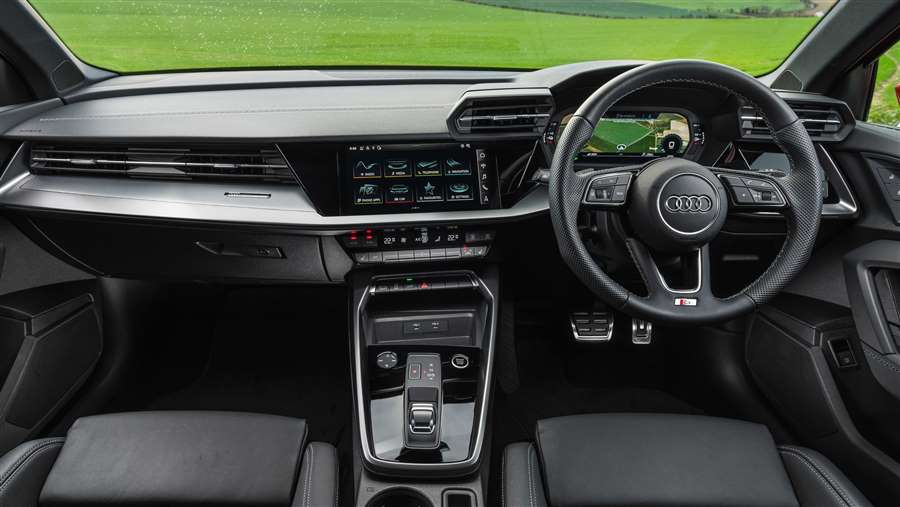
The electric motor’s ability to feed torque when the engine is still getting up to speed makes for some prodigious mid-range punch. And as for the transition between electric and combustion power, you’ll need to keep an eye on the crisp and responsive digital dash to be sure that it’s happening at all. It’s supremely refined when cruising, and very smooth when worked hard.
Inside, the A3’s cabin remains a very pleasant place, with the excellent Virtual Cockpit about the only flat element in a sharply creased dashboard, and none of its VW Golf sister’s ludicrous touch-sensitive sliders for key controls; here you get regular buttons for heating and ventilation. The quality feels nailed on, and a proper match for the car’s chief rival, the A-Class.
Space takes a hit in the move to plug-in power, though. Passengers are as well catered for here as in regular A3s, but they’ll have to pack a bit more carefully, because the boot capacity drops from 380 litres to 280 litres. That’s basically supermini numbers, so if you want a VW Group PHEV that can cope with a proper load of family clutter, and are prepared to put badge loyalties to one side, the Octavia iV (450 litres) would be better.
Source: autoexpress.co.uk

